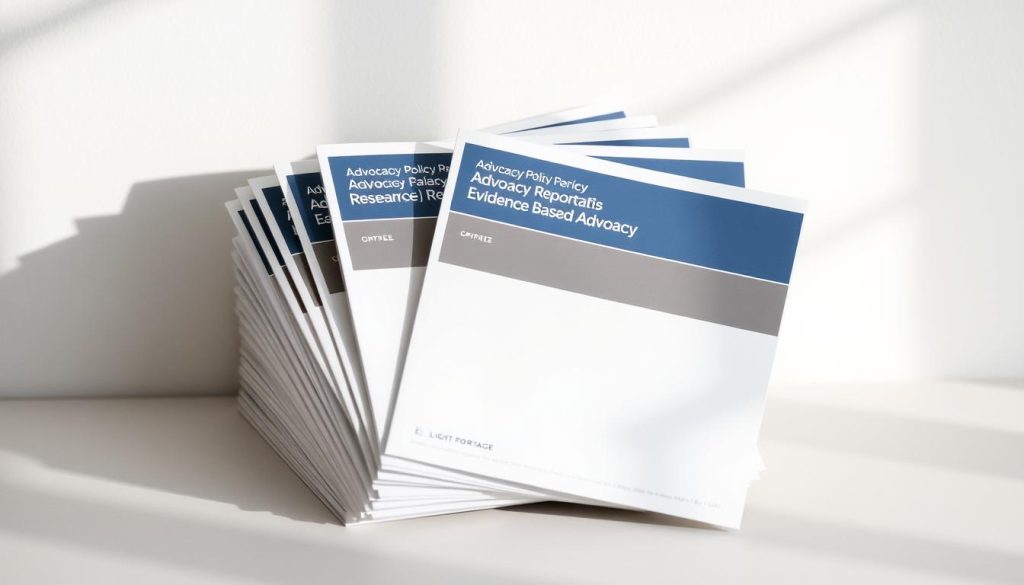When Sophie missed a deadline, she paused, counted the cost, and asked for help. That moment changed how she runs a solo consultancy. She built routines to protect focus and client trust.
We present a practical pathway for independent professionals who balance delivery, business development, and admin in limited time. Our aim is to turn public campaigns into steady, usable practices for your firm.
Across May’s recognition events and year-round practice, you will find clear steps to spot early signs, set boundaries, and secure reliable support. Local and online community often provide the simplest buffers against isolation and decision fatigue.
Expect structured options you can adapt to your market, plus checklists and rituals that protect revenue and client relationships as you navigate this professional journey.
For a deeper guide that connects public campaign dates and practical routines, see our detailed resource on professional self-care and well-being.
Table of Contents
Key Takeaways
- Practical routines can stabilize workload and client relationships.
- Recognizing early signs is a strategic business capability.
- Community and peer networks reduce isolation and fatigue.
- Simple checklists make awareness campaigns operational year-round.
- Support options respect autonomy and professional confidentiality.
Professional services that elevate mental health awareness for independent experts in France
Our services equip independent professionals in France with clear routines and simple policies to protect capacity and client trust. We design compact solutions that sit alongside delivery work and billing cycles.
Who we support:
- Freelancers, consultants, and small practice owners who need confidential, practical guidance.
- Adults working solo who want to balance workload, boundaries, and sustainable client service.
How guidance becomes measurable:
We translate practices into short, trackable indicators — self‑reported stress, focus scores, client satisfaction trends, and postponement metrics. These metrics show change without adding admin burden.
Services include a one‑page well‑being policy, 60–90 minute monthly trainings by topic, and an ecosystem of peers, licensed providers, and a local partner network. We also align simple campaigns with May focal points and the relevant week in May so events match your calendar.
« Embed care into kickoffs, reviews, and retrospectives so well‑being guides how you work. »
Why mental health awareness matters now
Today’s work environment amplifies everyday pressure for independent professionals, making early recognition and practical responses essential. Small, routine checks protect capacity and client trust in uncertain markets.
Current context: present-day stressors and professional isolation
Independent work concentrates decisions and financial risk on one person. That concentration raises stress and shortens recovery time.
Market swings, fluctuating demand, and nonstop online engagement add layers of strain. Isolation can intensify anxiety for many adults and reduce help‑seeking.
Reducing stigma to unlock timely care and support
Campaigns that normalize conversations about conditions speed access to appropriate care pathways. Simple language changes—from « weakness » to « workload risk »—shift reactions toward problem solving.
- Check early: brief, non‑judgmental self‑checks and peer check‑ins reduce delays.
- Recognize triggers: tight deadlines, scope creep, and unclear feedback can be redesigned.
- Protect family: proactive routines limit spillover into household life.
« Align routines with awareness practices to stabilise energy and attention through busy seasons. »
Understanding Mental Health Awareness Month and Week
May offers a reliable planning window for short education, recovery narratives, and low‑lift events. Use this period to add simple practices that fit your schedule and strengthen client trust.
May spotlight: global education, advocacy, and recovery narratives
Observed each May since 1949, Mental Health Awareness Month aims to educate the public, reduce stigma, and celebrate recovery.
The Mental Health Foundation has run Mental Health Awareness Week since 2001; in 2025 it took place 12–18 May with the theme community. That week highlights belonging, safety, and purpose and promotes « Wear It Green Day » for visibility and fundraising.
Community as a theme: belonging, safety, and purpose
The 2025 focus on community points to protective factors you can embed in daily work. Turn belonging into simple meeting norms and clear client communication rules.
Translate safety and purpose into peer routines or brief reflections that let people share boundaries without heavy logistics.
Aligning your business calendar with awareness campaigns
Plan a kickoff note at the start of May, a mid‑month check‑in, and a wrap‑up day to record lessons.
- Schedule one external webinar and one internal reflection exercise.
- Keep education short: a 15‑minute micro‑session or a single shared resource.
- Attach publications and links to a single resource page to keep content discoverable year‑round.
« Align awareness activities with invoices and project milestones to protect capacity while staying visible. »
Community-first support: building resilient professional networks
Building a dependable network of peers gives independent professionals clear, actionable ways to protect capacity and focus.
Benefits to mental health: connection, meaning, and safety
A small, trusted group creates regular touchpoints that counter isolation and boost purpose. Regular check-ins make recovery routines visible and accountable.
Map your community into tiers—close peers, sector forums, and broader media channels—so you invest energy where it matters. Rotate roles to spread leadership and increase resilience when workloads spike.
Online communities: keeping them safe and positive
Set clear norms: respectful response times, simple escalation policy, and privacy protections. Use moderation standards and a zero-tolerance rule for harassment.
- Use facilitation techniques—round-robins, timeboxing, and short check-in prompts—to hear all people without wasting time.
- Limit media overload by defining channel times and by documenting group policies for quarterly review.
- Celebrate micro-recoveries; small wins reinforce steady resilience and shared purpose.
« Safe, positive communities provide belonging, purpose, and practical support. »
Recognizing signs and taking action early
Small shifts in routine often signal larger strains; noticing them early preserves both clients and capacity. Early recognition reduces escalation and gives you choices.
Common indicators include trouble concentrating, longer recovery after tasks, and avoiding work you once handled easily. These are functional signs that workload may be unsustainable.
Common indicators across anxiety, depression, and stress
Look for patterns over two weeks: appetite or sleep changes, loss of interest in valued work, and withdrawal from community touchpoints.
- Persistent concentration lapses and extended recovery times.
- Anxiety signs: restlessness, sensitivity to feedback, disrupted sleep.
- Cross‑condition signals: appetite shifts, low motivation, social withdrawal.
- Use a 0–10 daily check for energy, focus, and mood to track trends objectively.
Action cascade: pause non‑essential tasks, inform key clients, and schedule a professional consult when thresholds you set are met. Prepare a short support brief listing triggers and preferred communication modes to speed effective help.
| Indicator | What to measure | Immediate action |
|---|---|---|
| Concentration lapses | Daily focus score (0–10) | Shorten work blocks; add breaks |
| Sleep/appetite change | Sleep hours & appetite notes | Adjust schedule; consult a provider |
| Social withdrawal | Missed peer check‑ins | Ask for a check‑in; share support brief |
« When in doubt, ask for help early; timely action protects business continuity and wellbeing. »
For practical routines and a rapid response plan, see our guide on resilience and stress management.
Services we provide for independent professionals

Independent practitioners need compact, reliable tools to keep work steady; our services deliver those tools. We combine short learning paths, clear policy templates, and facilitated groups so you can protect capacity without added admin.
Education and training: topics, workshops, and publications
Education pathways include concise modules on stress regulation, sleep and focus hygiene, boundary‑setting with clients, and practical community engagement methods.
We run sector‑tailored workshops with clear outcomes, templates, and curated publications to support ongoing practice.
Policy and practices: creating stigma‑free workplaces
Every micro‑organization receives a stigma‑free policy pack. It covers communication guidelines, availability norms, recovery windows, and an escalation protocol you can adapt to your contracts.
Peer groups and facilitated communities for ongoing support
We host small, trained groups to ensure psychological safety, efficient agendas, and measurable value. Confidential check‑ins, content kits for newsletters, and light advisory retainers help you map services to your business calendar and leverage May moments without overload.
« Practical tools and steady peer routines make asking for help routine, not risky. »
Ways to get involved: campaigns, events, and social media
Practical engagement keeps efforts steady and respectful of your schedule. Choose one manageable action in May that suits your calendar and client commitments.
Host or join community events
Pick a simple event: a local walk, a focused meetup, or a small office gesture for Wear It Green Day. Set clear goals—meet three new peers or share one practical tip.
Share your story
Use safe formats: 30–90 second vertical videos, short audio clips, or 300–1,000 word pieces. Keep boundaries: decide what is private, and link stories to a concrete resource or helpline.
Social media toolkits
Leverage ready captions and graphics from trusted groups like NAMI. Schedule posts during May to maintain visibility with minimal effort and reuse content across newsletter and site.
Partner with organizations
Work with reputable partners to amplify reach. Clarify roles, permissions, and branding to protect your professional identity and ensure a smooth collaboration.
« Start small, measure what resonates, and repeat what works. »
| Action | Ideal format | One practical goal |
|---|---|---|
| Local walk or day event | In‑person meet & greet | Network with 3 new peers |
| Share a story | Video, audio, or short article | Link to one resource |
| Social media posts | Scheduled captions & graphics | Maintain steady visibility in May |
From awareness to advocacy: policy and research engagement

Stories from independent professionals can shape practical policy when paired with concise recommendations. We encourage you to frame one concrete friction—access delays, funding gaps, or navigation complexity—and propose a single fix.
Turn your story into advocacy:
- Create a one‑page advocacy packet with your story, a clear problem statement, and a measurable ask aligned to existing policy frameworks.
- Share that packet with a local affiliate, a policymaker, or a sector partner to open dialogue.
Support research and reports:
Contribute to surveys, offer anonymized practice data, or co-author short case studies. Cite credible reports and publications to ground your position and build trust with stakeholders.
Organize micro‑roundtables to surface shared barriers and consolidate messages. Track milestones—meetings, submission dates, and follow‑ups—so advocacy stays focused and sustainable.
« Use clear, stigma‑reduction language so your ask is human‑centred and action‑ready. »
Support pathways: crisis and non-crisis options
When urgent risk appears, having clear steps reduces delay and protects your work and family. Use simple rules to decide when to act immediately and when to arrange planned care. Clear pathways protect you, your clients, and your family.
Immediate help in a crisis: recognizing urgency and acting fast
Define crisis indicators: imminent risk of harm, severe disorientation, or inability to meet basic needs. If any appear, do not self-monitor—act.
- In France, call 112 for general emergencies or 15 for SAMU (medical).
- Keep a visible crisis card: emergency contacts, allergies, and transport plan.
- Prepare a short crisis plan listing who to call, what to say, and where to go.
Non-crisis care: counseling, education, and ongoing management
For non-emergency needs, seek timely care from your primary doctor, licensed professionals, or validated digital programmes. Book follow-up sessions and schedule brief peer check-ins.
- Share temporary availability changes with key clients to protect delivery timelines.
- Involve trusted family members for logistics or short-term workload adjustments when useful.
- Maintain a verified list of local helplines, directories, and community resources with hours and languages noted.
« Normalize using support pathways as part of professional risk management that protects you, your clients, and your families. »
| Need | When to act | Quick steps |
|---|---|---|
| Crisis (imminent harm) | Now | Call 112/15, follow crisis card, arrange transport |
| Severe functional decline | Within 24 hours | Contact primary physician or urgent clinic; inform key clients |
| Ongoing support | Within 1 week | Schedule therapy, join peer check‑ins, set follow‑ups |
Measuring impact: tracking resilience, engagement, and outcomes
A lightweight metrics system helps you spot rising strain and test small fixes before they become crises.
Start with a compact dashboard: weekly check‑ins for mood, focus, and energy; monthly reviews for workload predictability and client satisfaction.
Use before‑after comparisons around May activities to see which ways of working supported resilience and engagement. Summarize outcomes in short reports you can share with peers or advisors.
Track early indicators of anxiety or strain — sleep variability, error rates, and missed micro‑deadlines — so you can intervene early.
- Pick one quarterly professional topic tied to metrics (sleep, workload design, communication).
- Align measures to objectives: fewer reschedules, steadier revenue, faster recovery after peaks.
- Reference publications and research sparingly to benchmark progress.
Treat obstacles as manageable challenges: record root causes, test one corrective action, and report results. Add a brief peer review to gain perspective and strengthen accountability.
« Keep the system lightweight: if a metric does not drive a decision, remove it. »
For practical templates and a short guide on continuous improvement, see our personal development guide.
Conclusion
Take one simple action this week to move from campaign energy to steady practice. Choose one of the practical ways you read here—update your availability policy, join a peer group, or set a compact dashboard—and schedule it now.
When you get involved, start small: host one event, share one short story with clear boundaries, and plan one follow‑up that builds habit. Invite families and trusted friends into modest support roles to protect your energy and routines.
Reduce stigma by using respectful language and firm boundaries; this strengthens trust with clients and colleagues. Keep a monthly reflection and a quarterly review so these ways become durable parts of your business.
We are here to support your next step. Pick one action for this week and let community and purpose carry it forward.
FAQ
What is the purpose of this guidance for independent professionals?
We provide clear, practical support to help freelancers, consultants, and small practice owners build resilience, reduce stigma, and access timely care. Our services combine education, peer groups, and policy advice so you can maintain stability while growing your business.
Who exactly do you support?
We work with independent professionals across sectors in France — from solo consultants to small clinic owners. Our approach addresses common stressors such as isolation, variable income, and role overload, with tailored workshops, peer facilitation, and community building.
How do your programs translate into measurable workplace wellbeing?
We track engagement, self-reported resilience, and help-seeking behaviors before and after interventions. Using surveys, participation metrics, and qualitative reports, we show improvements in connectedness, reduced stigma, and increased use of support services.
Why is awareness important now for independent workers?
Present-day pressures — remote work, economic uncertainty, and blurred work-life boundaries — increase risk of burnout and anxiety. Early recognition and community support lower barriers to care and improve long-term productivity and stability.
What is the role of awareness month and week in your strategy?
Dedicated campaigns in May and during awareness weeks provide a structured moment for education, advocacy, and sharing recovery narratives. They help align business calendars, activate community events, and amplify evidence-based messages.
How can I align my business calendar with campaign dates?
We offer planning templates and social media toolkits to help you schedule workshops, team check-ins, and content shares. Simple actions — a themed webinar or a “Wear It Green” day — boost visibility and show leadership commitment.
What benefits do community-first networks bring to professionals?
Peer networks reduce isolation, create meaning, and increase perceived safety. They offer practical exchange, accountability, and early warning of stress signs, which supports sustained career stability and wellbeing.
How do you keep online communities safe and constructive?
We set clear moderation policies, confidentiality rules, and onboarding guidance. Facilitators use evidence-based frameworks to manage conversations, spot risk, and refer members to crisis or non-crisis care when needed.
What common indicators should prompt early action?
Watch for persistent sleep or appetite changes, concentration problems, withdrawal from work or social contacts, increased errors, or heightened irritability. Early conversations and low‑threshold supports often prevent escalation.
What services do you provide for education and training?
We deliver workshops, webinars, and publications on stress management, resilience-building, and leadership practices. Content is practical, evidence-based, and designed for time‑pressed professionals.
How do you help organisations create stigma-free practices?
We advise on clear policies, anti-stigma training, and reasonable adjustments. Our recommendations include communication templates, return-to-work protocols, and measurement tools to monitor culture change.
What peer group options exist for ongoing support?
We facilitate small, confidential peer cohorts and moderated forums that meet regularly. These groups combine case discussions, skills practice, and mutual support to sustain professional wellbeing over time.
How can I get involved in campaigns and events?
Host or join local meetups, participate in sponsored walks, or run a “Wear It Green Day.” We provide event guides and promotional assets so you can engage colleagues, clients, and community partners effectively.
What guidance do you give for sharing personal stories publicly?
We suggest clear boundaries, reflection prompts, and safety checks. Share what feels safe, avoid identifying third parties without consent, and include resource signposts so your story supports others responsibly.
Do you provide social media toolkits and hashtags?
Yes. Toolkits include captions, graphics, and suggested hashtags to amplify reach while maintaining professional tone. They help you participate in campaigns without overexposure or brand risk.
How can organisations partner with you to amplify impact?
We collaborate with NGOs, professional associations, and private partners on joint events, research, and advocacy. Partnerships are tailored to shared goals in education, outreach, and policy change.
How do stories become advocacy for better care?
Personal narratives, aggregated responsibly, inform reports and policy briefs. We support evidence collection and media-ready case studies that feed research, stakeholder meetings, and legislative engagement.
What research and publications do you support?
We commission and promote applied research, outcome reports, and practitioner guides focused on prevention, early intervention, and service access. Findings translate into practical recommendations for independent professionals.
What should I do in a crisis?
If someone is at immediate risk, contact emergency services or local crisis lines without delay. We provide clear escalation pathways and partner contacts to ensure rapid, appropriate response.
What non-crisis care pathways are available?
For non-urgent needs, options include counseling, coaching, peer support groups, and educational programmes. We help professionals navigate local providers, telehealth options, and reimbursement or policy considerations.
How do you measure impact on resilience and engagement?
We use pre/post surveys, participation analytics, and qualitative feedback to track changes in resilience, help-seeking, and workplace engagement. These metrics guide continuous improvement of programmes.
How can I start working with you?
Contact our team to schedule an initial needs assessment. We will propose a tailored plan that balances education, peer support, and policy advice to fit your workload and organisational priorities.





